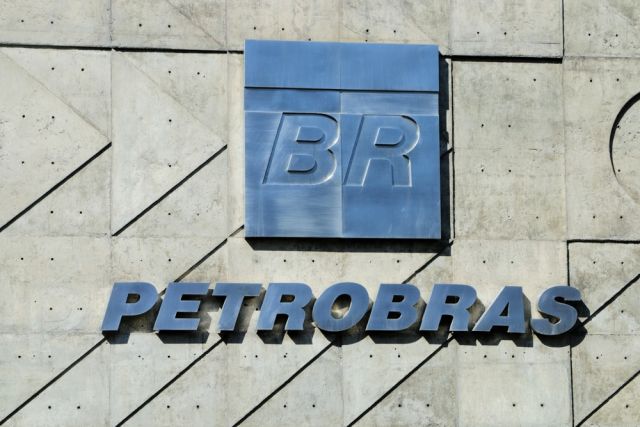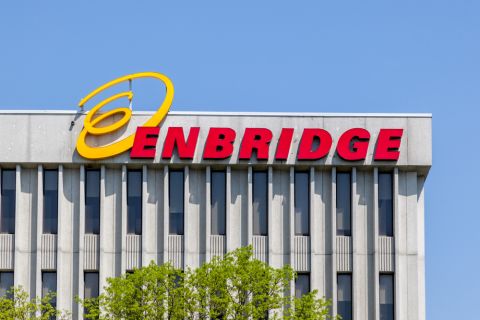
Petrobras is eyeing two new wells in Colombia this year, Petrobras Chief E&P Officer Joelson Mendes said on March 19 at CERAWeek by S&P Global. (Source: Shutterstock)
Petrobras CEO Jean Paul Prates says exploration is not in the state-owned company’s rear-view mirror amid attractive opportunities in the Equatorial Margin of South America, among other regions.
“No, it's not behind us. We have new frontiers, the Equatorial Margin, we have all the northeastern and northern states of Brazil, and we have Uruguay’s Pelotas Basin where we recently acquired 29 new areas [and] we are starting seismic in the next months,” Prates told Hart Energy on March 21 during an interview on the sidelines of CERAWeek by S&P Global.
RELATED
Uruguay presents offshore opportunities
Prates said exploration for more oil and gas in Brazil is a priority for the company.
“The other [regions] are of course going together because these are areas where the formations are known to us, such as Suriname, Guyana, Venezuela and offshore Colombia, and also all the West Africa coast, which is also very known to us,” Prates said.
Colombia remains a country that is important to Petrobras, Prates said, adding that Brazil’s President Luiz Inácio Lula da Silva was planning a visit there soon.
Petrobras is eyeing two new wells in Colombia this year, Petrobras Chief E&P Officer Joelson Mendes said during a March 19 session on Latin American upstream activity.
Colombia is “an important part of our development of exploration and production in the Equatorial Margin of South America,” Prates said. “We consider that the Equatorial Margin spans from Panama to the coast of Brazil. And all these areas are of our interest. We see that as our operational preference together with West Africa and the Atlantic margins of Brazil where we are already.”
The Equatorial Margin is located in the north of Brazil between the states of Amapá and Rio Grande do Norte, and holds oil potential in light of recent finds in nearby regions including Guyana, French Guiana and Suriname, Petrobras said on its website.
In Guyana, a consortium led by Exxon Mobil Corp. that includes Hess Corp. and China National Offshore Oil Corp. (CNOOC), has found recoverable resources of over 11 Bboe in the offshore Stabroek Block. Production from the block is around 620,000 bbl/d with the use of just three FPSO vessels. Exxon and Hess expect production to reach 1.2 MMbbl/d by 2027 from six FPSOs. The consortium expects to need 10 FPSOs to develop current potential resources.
“We are looking at Guyana, which is kind of crowded right now with the best of the areas pretty much taken over, [but] we may look at some farm-in possibilities,” Prates said.
In Suriname, APA Corp. and TotalEnergies SE have found oil in offshore Block 58 and are considering a final investment decision by year-end 2024.
RELATED
TotalEnergies, APA Eye $9B FID in Suriname’s Block 58
“In Suriname, we had a very good meeting with the government and with [national oil company] Staatsolie. And I think it was very positive,” Prates told Hart. “We think there are also opportunities for [Petrobras’] TransPetro, which is our subsidiary in services and logistics, to be also based in the region to serve all the industry.”
Petrobras’ exploration core
Over the next five years, Petrobras has earmarked exploration capex of about $7.5 billion, most of which will be spent on wells. In the pre-salt formation, the company has cut well costs in half in recent years, Mendes said during the Latin America session.
“Exploration is in our core,” Mendes said. Petrobras doesn’t have a history of acquiring new assets.
Based on Petrobras’ current portfolio and activities on the horizon, Mendes said the company is trending toward increased exploration.
“We have a very good matrix in Brazil and we have an oil and gas portfolio, and we are developing this portfolio with low emissions, low cost and we have many interesting hubs in Brazil,” Mendes said.
While Petrobras continues with numerous pre-salt developments, the Rio de Janeiro-based energy giant is betting big that the Equatorial Margin can be developed into a new hub, Mendes said.
Petrobras also continues to view international oil companies and national oil companies as important partners.
Petrobras can learn from others, Mendes said.
“We don't have competitors,” he said. “We have partners in our operations.”
Recommended Reading
The One Where EOG’s Stock Tanked
2024-02-23 - A rare earnings miss pushed the wildcatter’s stock down as much as 6%, while larger and smaller peers’ share prices were mostly unchanged. One analyst asked if EOG is like Narcissus.
Canadian Natural Resources Boosting Production in Oil Sands
2024-03-04 - Canadian Natural Resources will increase its quarterly dividend following record production volumes in the quarter.
Keeping it Simple: Antero Stays on Profitable Course in 1Q
2024-04-26 - Bucking trend, Antero Resources posted a slight increase in natural gas production as other companies curtailed production.
Enbridge Advances Expansion of Permian’s Gray Oak Pipeline
2024-02-13 - In its fourth-quarter earnings call, Enbridge also said the Mainline pipeline system tolling agreement is awaiting regulatory approval from a Canadian regulatory agency.
Endeavor Integration Brings Capital Efficiency, Durability to Diamondback
2024-02-22 - The combined Diamondback-Endeavor deal is expected to realize $3 billion in synergies and have 12 years of sub-$40/bbl breakeven inventory.






